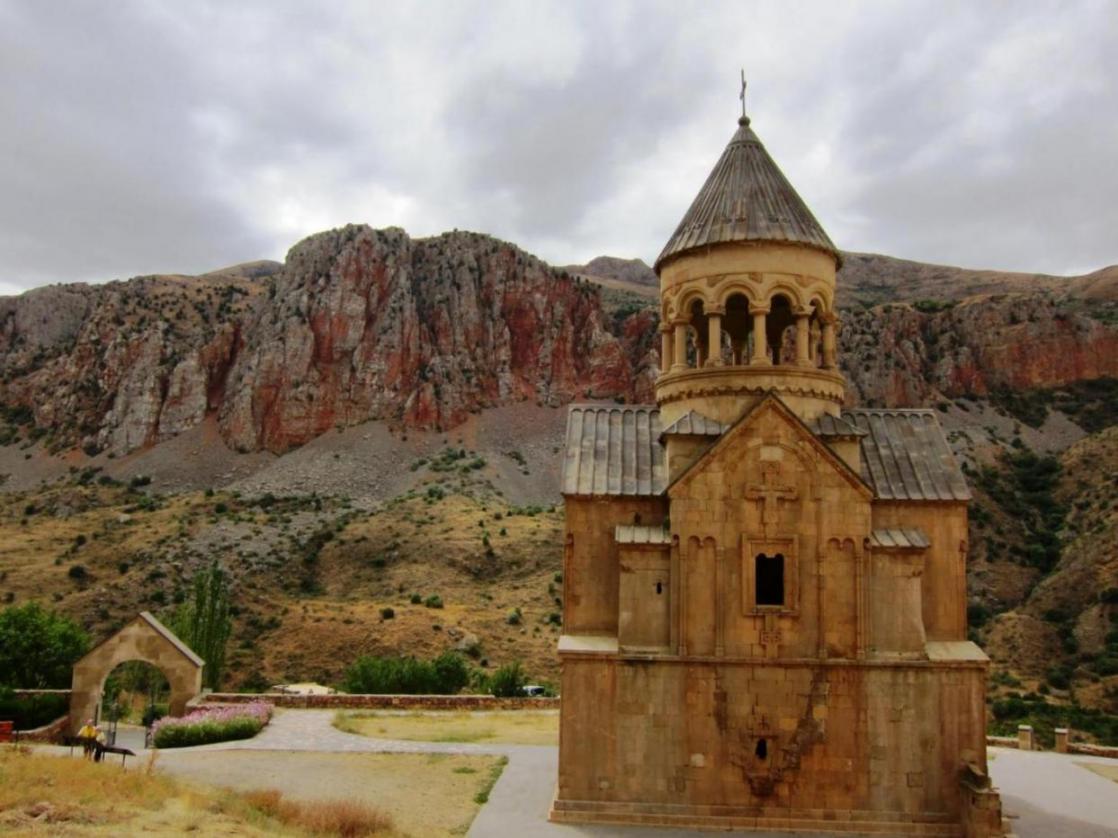Thursday, December 25, the birth anniversary of Jesus Christ, was an occasion for Iranian Christians, like millions of Christians around the globe, to gather together to celebrate and observe their religious and traditional rituals.
On this important occasion, Milad Tower in Tehran offered as part of its program, free visits to the complex to have a share in the most significant celebration of the Christians.
The program at Milad Tower will continue for fellow Christians and other Christian visitors till Friday, January 2, 2015, according to Persian daily Forsat Emruz.
In another incentive, Kish Air hosted 400 foreign tourists visiting Kish Island in a celebration “pivoted on peace, friendship, and mercy.”
One of the participants at the ceremony wished “it would work as a door to a world free of violence and filled with peace and kindness.
Christians throughout the world celebrate the turn of the Christian year or Gregorian calendar at midnight of December 31; Iranian Christians are no exception.
New Year
“The New Year, for us, starts with ceremonies to celebrate and pray in the church in the presence of the bishop seconds after December 31 midnight. The Christmas Mass is observed the next day, January 1”, said Tuma Galestanian, head of religious studies and training at Vank Cathedral, Isfahan Province.
The ceremonies and celebrations continue till January 5 and on the sixth morning, Iranian Armenians gather at Bethlehem Church in Isfahan to perform baptism in commemoration of the Baptism of Jesus Christ.
There are other celebrations along with these religious rituals for Iranian Christians to start the New Year, as Archbishop Thomas Meram, the bishop of Assyrian Church of the East, Chaldean Catholic Church of Urumia, told MNA in a ceremony in Holy Mary Church in Jolfa, in Urumia, West Azerbaijan on Christmas day.
Officials from West Azerbaijan Province and Urumia governorate office also attended the church ceremony.
The archbishop, in his speech, considered the birthday of Jesus Christ as the day of love, peace, and kindness among all human beings and asserted that West Azerbaijan has set a very good example of peaceful coexistence among people from different ethnic and religious background.
Justice, law abidance, and social security are among the basic needs of a society and the Islamic Republic of Iran has been successful in this regard, noted Archbishop Meram.
Christian Heritage
The share of Iranian Christians in the country’s national heritage is noteworthy. In recent years, Iran Cultural Heritage, Handicrafts, and Tourism Organization (ICHHTO) have made special efforts to inscribe Christian heritage on national and world heritage list.
The director of the Study Center for Iranian Churches at ICHHTO, Sherly Avedian, admiring the endeavors of the organization, told Forsat Emruz that ICHHTO formed the headquarters and study center in close collaboration with the Armenian Diocese of Tehran and Vache Hovsepian cultural center in 2005 to make a list of churches across the country which have the potential to be inscribed on the world heritage list.
The headquarters of Iranian historical churches conducted a vast research in East and West Azerbaijan to identify churches and document their history. Finally in 2008 a number of Iranian churches made their way to the world heritage list.
Avedian says the most important among them is Saint Thaddeus monastery or Ghareh Keliseh, literally “The Black Church”. It is an ancient Armenian monastery located in the mountainous area of Iran’s West Azerbaijan Province, about 20 km from the town of Maku. It receives visits from many domestic and foreign tourists every year.
At 97 km from St. Thaddeus, lies the St. Stepanos Monastery, in northwest of Jolfa city, East Azarbaijan Province. It is situated in a deep canyon along the Aras river on the Iranian side of the border between Azerbaijan and Iran. It was built in the 9th century and rebuilt in the Safavid era after several earthquakes damaged it.
The third church, inscribed in 2008, is Dzordzor (pronounced zor-zor in Farsi), located near Baroon village in Chaldoran county, West Azerbaijan Province.
These churches form a collection of 12 historical religious sites of Armenian Iranians inscribed on UNESCO’s list as Iran’s 9th cultural heritage. Avedian stresses that inscription of the churches was a big step towards the expansion of research and studies focused on Armenian history in Iran.


